 Search by Keyword
|
"HEY JUDE"
(Apple SW-385)
Released February 26th, 1970
In late February of 1970, the Beatles album “Abbey Road” was still being digested by the American public. It had been released back in October of 1969 and was a great success, rising very quickly to the top position on the Billboard album chart and staying there a total of eleven weeks. In fact, it was still #1 on February 26th, 1970, when yet another Beatles album was released entitled “Hey Jude.”
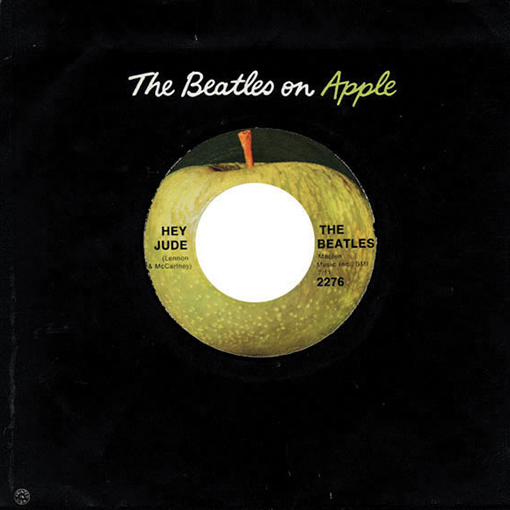 The song “Hey Jude,” of course, was quite familiar to the American record buying public, having been a huge hit in the fall of 1968. It stayed in the #1 spot on the Billboard Hot 100 for nine weeks, becoming not only the most successful American single for the group but even coming in as the biggest hit of the entire decade by any artist. So for an avid Beatles fan to see an album on the market with that title, it would cause both excitement and curiosity. Was there an album full of songs that they recorded during 1968 that hadn't been released until now? Or was this the unreleased Beatles album containing the song “Get Back” that had been talked about in the press for the last few months and had recently appeared in some stores as a bootleg album? The song “Hey Jude,” of course, was quite familiar to the American record buying public, having been a huge hit in the fall of 1968. It stayed in the #1 spot on the Billboard Hot 100 for nine weeks, becoming not only the most successful American single for the group but even coming in as the biggest hit of the entire decade by any artist. So for an avid Beatles fan to see an album on the market with that title, it would cause both excitement and curiosity. Was there an album full of songs that they recorded during 1968 that hadn't been released until now? Or was this the unreleased Beatles album containing the song “Get Back” that had been talked about in the press for the last few months and had recently appeared in some stores as a bootleg album?
 The answer to both of these questions was no. The song titles on the back cover said it all: “I Should Have Known Better”? “Lady Madonna”? "Old Brown Shoe"? This was just another compilation release of songs that had yet to be on a Capitol album in America. Capitol Records had been releasing make-shift albums, such as this, throughout the years, although the June 1966 album “Yesterday...And Today!” was the last time something of this caliber had been released. The answer to both of these questions was no. The song titles on the back cover said it all: “I Should Have Known Better”? “Lady Madonna”? "Old Brown Shoe"? This was just another compilation release of songs that had yet to be on a Capitol album in America. Capitol Records had been releasing make-shift albums, such as this, throughout the years, although the June 1966 album “Yesterday...And Today!” was the last time something of this caliber had been released.
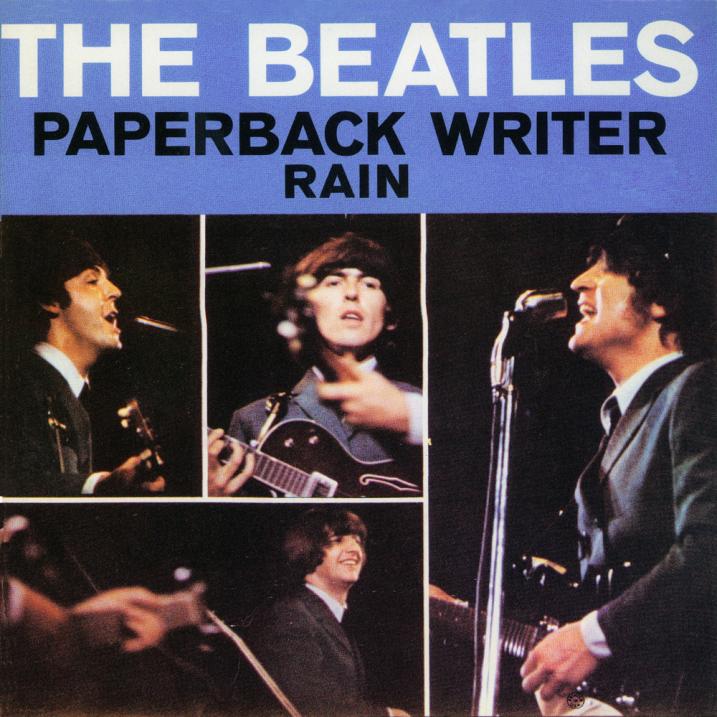 Nonetheless, the “Hey Jude” album appeared in stores all over the country and Beatles fans had to have it. After all, it contained many well known songs, including three US #1 hits ("Can't Buy Me Love," "Paperback Writer" and the title track). Some of the selections on the album were even available in stereo for the first time, including “Hey Jude” itself, which made it a must-have. Nonetheless, the “Hey Jude” album appeared in stores all over the country and Beatles fans had to have it. After all, it contained many well known songs, including three US #1 hits ("Can't Buy Me Love," "Paperback Writer" and the title track). Some of the selections on the album were even available in stereo for the first time, including “Hey Jude” itself, which made it a must-have.
Origin Of The Album
While many would assume that Capitol Records, which was still the distributor for Beatles releases on Apple Records, put this album together as yet another cash in, this appears not to be the case. Allen Klein, who was currently overseeing the group's activities, had recently secured for his clients a more profitable deal from Capitol, the band now receiving 69 cents per album sold in America. Klein was therefore anxious to show The Beatles that he had their best financial interests at heart, especially since John Lennon had recently informed the rest of his band members that he wanted "a divorce" from the band.
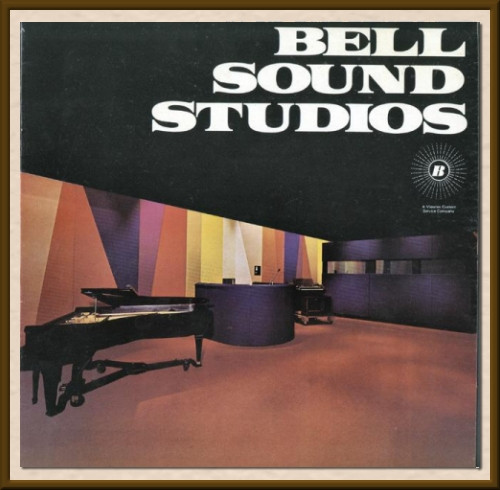 Undoubtedly in an effort to show them what kind of money could be made if they stayed together as a group, Allen Klein asked associate Allan Steckler to assemble a list of Beatles songs that hadn't yet been released in the US on a Capitol album. In late November of 1969, ten songs were chosen and put into a running order while Capitol was informed of their intentions for an album to be released in the near future. Allen Steckler took the tapes of the album to Bell Sound Studios in New York for mastering in preperation for its release. Undoubtedly in an effort to show them what kind of money could be made if they stayed together as a group, Allen Klein asked associate Allan Steckler to assemble a list of Beatles songs that hadn't yet been released in the US on a Capitol album. In late November of 1969, ten songs were chosen and put into a running order while Capitol was informed of their intentions for an album to be released in the near future. Allen Steckler took the tapes of the album to Bell Sound Studios in New York for mastering in preperation for its release.
.jpg) There was some indecision about certain elements of this release along the way, however. One was concerning the name of the album. It was earlier decided that it would be called “The Beatles Again,” record labels and two sets of album cover designs being prepared that depicted this title. Then, after the first pressing of the album had taken place, a decision was made to change the name from the somewhat sarcastic original title to simply “Hey Jude” which, given the song's first appearance in stereo, was considered the highlight of the album. This is why the first pressings identify the album as “The Beatles Again” on the label while the cover spine calls it “Hey Jude.” There was some indecision about certain elements of this release along the way, however. One was concerning the name of the album. It was earlier decided that it would be called “The Beatles Again,” record labels and two sets of album cover designs being prepared that depicted this title. Then, after the first pressing of the album had taken place, a decision was made to change the name from the somewhat sarcastic original title to simply “Hey Jude” which, given the song's first appearance in stereo, was considered the highlight of the album. This is why the first pressings identify the album as “The Beatles Again” on the label while the cover spine calls it “Hey Jude.”
 Another slight indecision concerned the list price of the album. Since all of the material on this album was previously released, could the label get away with charging the public the same amount as if it was a new Beatles album? “Abbey Road,” for instance, was offered at a list price of $6.98, but the “Hey Jude” album was a compilation album after all. At first, the release was given the catalog number SO-385, the “O” indicating a $6.98 list price. After some consideration, however, a decision was made to lower the list price to $5.98, which was a show of fairness to Beatles fans who quite possibly already had all of these songs in their collections. The catalog number was thereby changed to SW-385, the “W” stipulating a $5.98 list price. Therefore, the first pressing of the album contained both the incorrect album title and the incorrect catalog number, both of these elements being changed in later pressings. Another slight indecision concerned the list price of the album. Since all of the material on this album was previously released, could the label get away with charging the public the same amount as if it was a new Beatles album? “Abbey Road,” for instance, was offered at a list price of $6.98, but the “Hey Jude” album was a compilation album after all. At first, the release was given the catalog number SO-385, the “O” indicating a $6.98 list price. After some consideration, however, a decision was made to lower the list price to $5.98, which was a show of fairness to Beatles fans who quite possibly already had all of these songs in their collections. The catalog number was thereby changed to SW-385, the “W” stipulating a $5.98 list price. Therefore, the first pressing of the album contained both the incorrect album title and the incorrect catalog number, both of these elements being changed in later pressings.
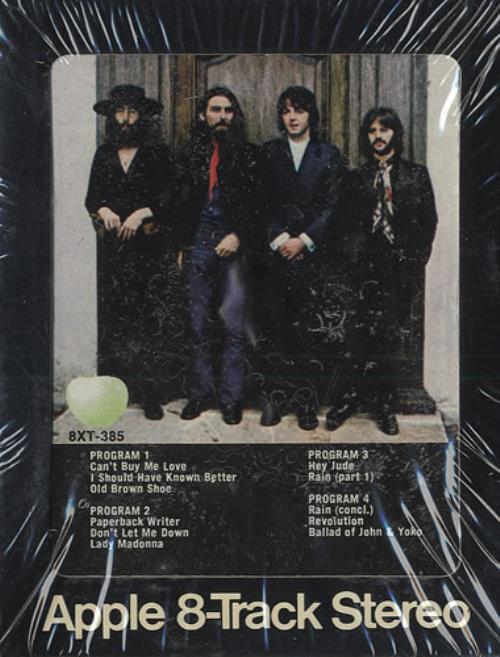
"Hey Jude" 8-Track tape.
Recording The Album
 Allen Steckler's choices weren't all-inclusive as to what songs hadn't been included on Capitol albums up to that time, but they covered many of the bases. Seven tracks weren't used, these being "Misery," "There's A Place," "From Me To You," "Sie Liebt Dich," "A Hard Day's Night," "I'm Down" and "The Inner Light," any or all of which could easily have fit onto this album, which only had a running time of 33 1/3 minutes. Allen Steckler's choices weren't all-inclusive as to what songs hadn't been included on Capitol albums up to that time, but they covered many of the bases. Seven tracks weren't used, these being "Misery," "There's A Place," "From Me To You," "Sie Liebt Dich," "A Hard Day's Night," "I'm Down" and "The Inner Light," any or all of which could easily have fit onto this album, which only had a running time of 33 1/3 minutes.
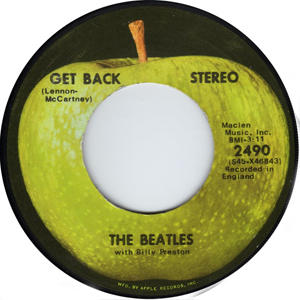 "Get Back” had also not appeared on a Capitol Beatles album at this point but it was already earmarked to be included on the yet-to-be-released “Let It Be” Soundtrack album which was due out in the next few months. Curiously, that single's b-side “Don't Let Me Down” was included on the “Hey Jude” album, indicating that they didn't intend on it being contained on the “Let It Be” album even though it was recorded during that time period and was prominently featured in the movie. Why the decision was made to include the song on the "Hey Jude" album instead has not been documented. "Get Back” had also not appeared on a Capitol Beatles album at this point but it was already earmarked to be included on the yet-to-be-released “Let It Be” Soundtrack album which was due out in the next few months. Curiously, that single's b-side “Don't Let Me Down” was included on the “Hey Jude” album, indicating that they didn't intend on it being contained on the “Let It Be” album even though it was recorded during that time period and was prominently featured in the movie. Why the decision was made to include the song on the "Hey Jude" album instead has not been documented.
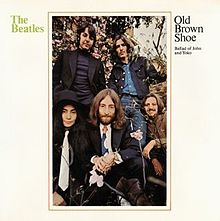 Most of the “Hey Jude” track list was sequenced in the order that they were originally recorded and released, starting with “Can't Buy Me Love” which began to be recorded on January 29th, 1964. The six tracks contained on side one span from this date to mid 1968 with John's “Revolution.” After the song “Hey Jude,” the remaining three tracks of side two were recorded and originally released in 1969. George Harrison's “Old Brown Shoe” followed immediately after “Hey Jude” but was actually the last song to be recorded of the album's tracks, the sessions for the song occurring on April 16th and April 18th, 1969. Therefore, the recording of the “Hey Jude” album actually spans over five years and two months, from January 29th, 1964 to April 18th, 1969. Most of the “Hey Jude” track list was sequenced in the order that they were originally recorded and released, starting with “Can't Buy Me Love” which began to be recorded on January 29th, 1964. The six tracks contained on side one span from this date to mid 1968 with John's “Revolution.” After the song “Hey Jude,” the remaining three tracks of side two were recorded and originally released in 1969. George Harrison's “Old Brown Shoe” followed immediately after “Hey Jude” but was actually the last song to be recorded of the album's tracks, the sessions for the song occurring on April 16th and April 18th, 1969. Therefore, the recording of the “Hey Jude” album actually spans over five years and two months, from January 29th, 1964 to April 18th, 1969.
 A few of these songs had never been mixed in stereo as of that time because of being released as singles only. Therefore, George Martin and EMI staffers had to create them in late 1969 so they could be released on this stereo-only album. The days of “duophonic,” or “fake stereo,” mixes were gone, so proper stereo mixes were prepared for “Rain,” “Lady Madonna,” “Revolution” and “Hey Jude.” Both “Can't Buy Me Love” and “I Should Have Known Better” were previously mixed for stereo as included on the British “A Hard Day's Night” album, and stereo mixes for “Paperback Writer” were made back in 1966 for inclusion on the British album “A Collection Of Beatles Oldies,” although an alternate stereo mix with reversed channels and louder backing vocals was used for the “Hey Jude” album. Since mono releases were primarily phased out for US releases by the time the remaining tracks on side two were originally released, Capitol already had stereo mixes for these tracks. A few of these songs had never been mixed in stereo as of that time because of being released as singles only. Therefore, George Martin and EMI staffers had to create them in late 1969 so they could be released on this stereo-only album. The days of “duophonic,” or “fake stereo,” mixes were gone, so proper stereo mixes were prepared for “Rain,” “Lady Madonna,” “Revolution” and “Hey Jude.” Both “Can't Buy Me Love” and “I Should Have Known Better” were previously mixed for stereo as included on the British “A Hard Day's Night” album, and stereo mixes for “Paperback Writer” were made back in 1966 for inclusion on the British album “A Collection Of Beatles Oldies,” although an alternate stereo mix with reversed channels and louder backing vocals was used for the “Hey Jude” album. Since mono releases were primarily phased out for US releases by the time the remaining tracks on side two were originally released, Capitol already had stereo mixes for these tracks.
Cover Art
On August 22nd, 1969, The Beatles met on the grounds of John and Yoko's newly acquired "Tittenhurst Park" home in Sunninghill near Ascot, Berkshire, for their final photo shoot. This was only two days after their final day together in the recording studio, business meetings being the only times thereafter that they would all be in the same room together.
 A good amount of photos were taken on this day in various locations in and around John and Yoko's new home, the majority of them being taken outside. Three of these photos ending up being chosen for the US “Hey Jude” album. The front cover photo was taken on a balcony in the doorway of the property's Victorian Assemby Hall, The Beatles leaning against the door surrounded by stone busts. Both John and George were wearing wide-brimmed hats on this day, George deciding to place his on one of the stone busts for this photo. A good amount of photos were taken on this day in various locations in and around John and Yoko's new home, the majority of them being taken outside. Three of these photos ending up being chosen for the US “Hey Jude” album. The front cover photo was taken on a balcony in the doorway of the property's Victorian Assemby Hall, The Beatles leaning against the door surrounded by stone busts. Both John and George were wearing wide-brimmed hats on this day, George deciding to place his on one of the stone busts for this photo.
 In the window above this doorway, the album cover designer decided to superimpose another picture from this same photo shoot, one they took among some weeping blue atlas cedar trees on the grounds of John and Yoko's new home. The back cover of the album featured yet another photo from this day, one they took in front of a low wall on the lawn near the main house with both Paul and John sitting. In the window above this doorway, the album cover designer decided to superimpose another picture from this same photo shoot, one they took among some weeping blue atlas cedar trees on the grounds of John and Yoko's new home. The back cover of the album featured yet another photo from this day, one they took in front of a low wall on the lawn near the main house with both Paul and John sitting.
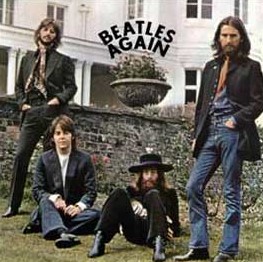 There were at least four variations of these pictures assembled for this cover, three of which featured the name of the album on either the front or back cover (two of them indicating the album as “Beatles Again”). It was decided not to feature the album's title on the cover at all, however. Also, following the pattern set by “Abbey Road” from a few months prior, as well as earlier releases such as “Rubber Soul,” the group's name did not appear on the cover either. Their familiar faces, bearded or not, were enough to let record buyers know it was indeed a Beatles album. There were at least four variations of these pictures assembled for this cover, three of which featured the name of the album on either the front or back cover (two of them indicating the album as “Beatles Again”). It was decided not to feature the album's title on the cover at all, however. Also, following the pattern set by “Abbey Road” from a few months prior, as well as earlier releases such as “Rubber Soul,” the group's name did not appear on the cover either. Their familiar faces, bearded or not, were enough to let record buyers know it was indeed a Beatles album.
Success Of The Album
 Even though "Abbey Road" was still riding high on the charts, the "Hey Jude" album rode on its coattails and became a very successful album for its time. Shortly after its release, it debuted at #3 on the Billboard album chart, pushing to #2 the following week under the highly prestigious Simon & Garfunlkel album "Bridge Over Troubled Water" at #1. The Beatles album stayed at #2 on this chart for four straight weeks. It remained in the Billboard Top 10 for eleven weeks, competing with both "Abbey Road" and Paul's first solo album "McCartney." The album "Hey Jude" sold 3.3 million copies. Even though "Abbey Road" was still riding high on the charts, the "Hey Jude" album rode on its coattails and became a very successful album for its time. Shortly after its release, it debuted at #3 on the Billboard album chart, pushing to #2 the following week under the highly prestigious Simon & Garfunlkel album "Bridge Over Troubled Water" at #1. The Beatles album stayed at #2 on this chart for four straight weeks. It remained in the Billboard Top 10 for eleven weeks, competing with both "Abbey Road" and Paul's first solo album "McCartney." The album "Hey Jude" sold 3.3 million copies.
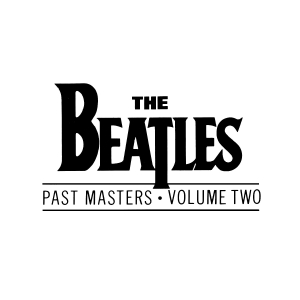 As the compact disc era took over in the 1980's, the British Beatles catalog gained dominance on the market. This meant that the make-shift “Hey Jude” album became redundant at that time, the “Past Masters” CD sets removing any need for continuing its existence. However, the “Hey Jude” album did get a CD release on January 21st, 2014, in conjunction with the celebration of the original American releases of the Beatles catalog, as well as the box set “The US Albums.” Fans who cherish their memories of this successful album can now own it on compact disc if they so desire. As the compact disc era took over in the 1980's, the British Beatles catalog gained dominance on the market. This meant that the make-shift “Hey Jude” album became redundant at that time, the “Past Masters” CD sets removing any need for continuing its existence. However, the “Hey Jude” album did get a CD release on January 21st, 2014, in conjunction with the celebration of the original American releases of the Beatles catalog, as well as the box set “The US Albums.” Fans who cherish their memories of this successful album can now own it on compact disc if they so desire.
Written and compiled by Dave Rybaczewski
CLICK ON THE SONG TITLES BELOW TO READ THE IN-DEPTH HISTORY OF THE SONGS ON "HEY JUDE"
|
IF YOU WOULD LIKE TO MAKE A DONATION TO KEEP THIS WEBSITE UP AND RUNNING, PLEASE CLICK BELOW!
Sign Up Below for our MONTHLY BEATLES TRIVIA QUIZ!
|